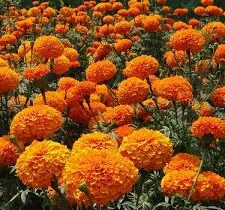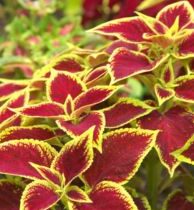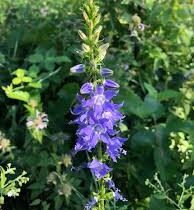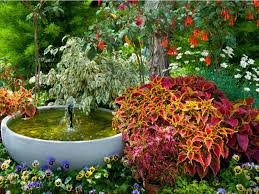Begonias are a popular choice for gardeners due to their stunning foliage and vibrant blooms. This comprehensive guide covers everything you need to know about begonias, including their benefits, types, planting, care, and management.
Definition and Benefits of Begonias
Begonias, belonging to the family Begoniaceae, are a diverse group of flowering plants known for their unique foliage and colorful flowers. Here are some key benefits of growing begonias:
- Diverse Varieties: With over 1,800 species, begonias offer a wide range of colors, shapes, and sizes, making them suitable for various garden designs.
- Shade Tolerance: Many begonias thrive in partial to full shade, making them ideal for shady spots in the garden.
- Long Blooming Season: They provide continuous blooms throughout the growing season, adding vibrant color to gardens and containers.
- Low Maintenance: Begonias are generally easy to care for, making them a great option for novice gardeners.
Basics of Begonias
- Common Name: Begonia
- Botanical Name: Begonia spp.
- Family: Begoniaceae
- Plant Type: Herbaceous, perennial or annual (depending on the species)
- Mature Size: 6–36 inches tall, depending on the variety
- Sun Exposure: Partial to full shade
- Soil Type: Well-drained, rich in organic matter
- Soil pH: Slightly acidic to neutral (6.0 to 7.0)
- Bloom Time: Late spring through fall
- Flower Colors: Pink, red, white, orange, yellow, bicolor
- Hardiness Zones: 9-11 (USDA) for most types; many are grown as annuals in cooler climates
- Native Area: Primarily tropical and subtropical regions
Choosing Which Begonias to Grow
Begonias come in various types, each with unique characteristics. Here are some popular types:
1. Begonia semperflorens (Wax Begonia)
- Description: Known for their glossy, waxy leaves and continuous blooms in shades of pink, red, or white.
- Height: Typically grows 6 to 12 inches tall.
- Bloom Time: Blooms from spring until frost.
- Ideal Uses: Great for borders, containers, and bedding plants.
- Special Notes: Tolerates a range of light conditions but prefers partial shade.
2. Begonia tuberosa (Tuberous Begonia)
- Description: Features large, showy flowers with ruffled petals. Foliage is often rich green or bronze.
- Height: Typically grows 12 to 24 inches tall.
- Bloom Time: Blooms from late spring until frost.
- Ideal Uses: Ideal for containers, hanging baskets, and shaded garden beds.
- Special Notes: Require well-draining soil and should be lifted and stored in winter in colder climates.
3. Begonia rex (Rex Begonia)
- Description: Renowned for its spectacular foliage, which comes in various colors and patterns.
- Height: Typically grows 12 to 18 inches tall.
- Bloom Time: Blooms sporadically throughout the growing season, but grown mainly for foliage.
- Ideal Uses: Excellent for indoor plants or as part of shaded garden displays.
- Special Notes: Prefers humidity and well-drained soil; often grown as a houseplant.
4. Begonia boliviensis (Bolivian Begonia)
- Description: Features cascading growth habit with vibrant orange or yellow flowers.
- Height: Typically grows 12 to 24 inches tall.
- Bloom Time: Blooms from late spring until frost.
- Ideal Uses: Perfect for hanging baskets or as a trailing plant in mixed containers.
- Special Notes: Prefers bright, indirect light and well-draining soil.
When to Plant Begonias
Getting the Planting Site Ready
Choose a location with well-drained soil rich in organic matter. Begonias thrive in slightly acidic to neutral pH levels. Prepare the soil by loosening it and adding compost to enhance fertility.
Timing for Planting
- Indoors: Start tuberous begonias indoors about 8-10 weeks before the last frost date.
- Outdoors: Transplant begonias outdoors after the last frost, typically in late spring.
Specific Timing for Different Regions
- Northern Regions: Plant after the last frost date, around mid to late May.
- Southern Regions: You can plant earlier, typically in April.
Growing Begonias
Planting Location
Begonias prefer partial to full shade. While some types tolerate full sun, most thrive in dappled sunlight or areas with afternoon shade.
Spacing
Space begonias about 12 to 18 inches apart, depending on the variety, to allow for proper air circulation and growth.
Care and Maintenance
Watering
Begonias prefer consistently moist soil but do not tolerate soggy conditions. Water them regularly, allowing the top inch of soil to dry out between waterings. Using mulch can help retain moisture.
Fertilization
Feed begonias with a balanced, water-soluble fertilizer every 4-6 weeks during the growing season to promote healthy growth and blooming. Avoid over-fertilizing, as it can lead to excessive foliage at the expense of flowers.
Pruning and Deadheading
Regular deadheading—removing spent flowers—encourages new blooms and extends the flowering season. Trim back any leggy growth to maintain a bushy shape.
Pest and Disease Management
Begonias are generally resistant to pests, but watch for aphids, whiteflies, and spider mites. If you notice infestations, treat with insecticidal soap or neem oil. Ensure good air circulation to prevent fungal diseases, such as powdery mildew.
Begonia Pests and Diseases
Identifying and Treating Diseases
Common issues include root rot and leaf spot. Ensure proper drainage and avoid overwatering to prevent these problems. Treat infections promptly with appropriate fungicides or by removing affected plants.
Identifying and Fixing Signs of Distress
Look for yellowing leaves, wilting, or stunted growth, which may indicate nutrient deficiencies or pest problems. Address these issues by adjusting your care routine or using organic pest control methods.
Planting Begonias in the Garden
How to Use Begonias
Begonias can be planted in shaded borders, containers, hanging baskets, or as ground cover. Their colorful blooms and striking foliage complement other plants, creating a vibrant display throughout the growing season.
Companion Planting
Begonias pair well with other shade-loving plants, such as ferns, hostas, and astilbes, to create a lush, layered garden effect. Their foliage can also provide a beautiful backdrop for other colorful flowers.
End of Season Care for Begonias
As the growing season comes to an end, it’s important to care for your begonias properly.
- Tuberous Varieties: If you live in a colder climate, lift tuberous begonias after the first frost, let them dry, and store them in a cool, dry place until spring.
- Non-Tuberous Varieties: In mild climates, you can leave them in the ground, but consider mulching to protect the roots.
Collecting Seeds
For those interested in propagation, begonias can be grown from seed, although it can be more challenging. Allow seed pods to mature on the plant, then collect and store them in a cool, dry place.
Additional Tips for Successful Begonia Growth
- Humidity: Many begonias thrive in humid conditions, so consider misting them or placing a humidity tray nearby if grown indoors.
- Temperature: Keep begonias in moderate temperatures; they typically prefer 60-75°F (15-24°C) during the day.
Soil Quality: Use a potting mix designed for tropical plants if growing begonias in containers to ensure proper drainage and nutrients.








Leave a Reply
View Comments